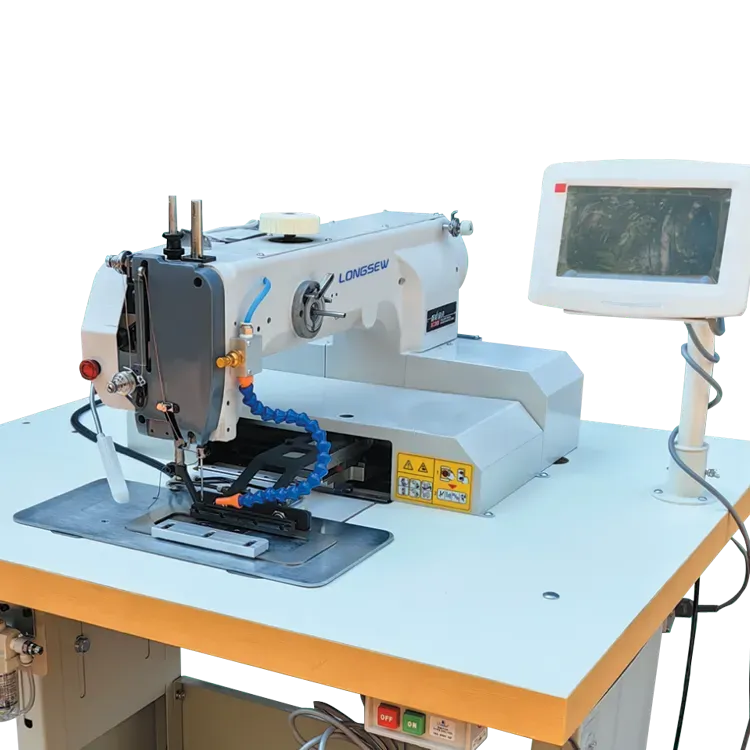what is a cover stitch on a serger
Understanding Cover Stitch on a Serger
When delving into the world of sewing, particularly with a serger, many enthusiasts often encounter terms and techniques that may not be immediately clear. One such technique is the cover stitch, a powerful tool that can transform the quality and durability of your sewing projects. This article will provide an in-depth understanding of what a cover stitch is, how it works, and its applications in sewing.
What is a Cover Stitch?
A cover stitch is a specialized type of stitch primarily used for hemming and finishing edges on knit fabrics. Unlike traditional sewing machines that create a single line of stitching, cover stitches are distinctive because they consist of two or three needle threads that lie on the top side of the fabric, while a looper thread wraps around the fabric's edge. This creates a finished look that is both functional and aesthetically pleasing, allowing for the stretch necessary in knit fabrics, making it ideal for garments like t-shirts, leggings, and activewear.
How Does It Work?
A cover stitch is achieved using a serger, also known as an overlock machine. This machine is particularly adept at creating a variety of stitches designed for different sewing applications. To operate a serger for cover stitching, one typically sets it up with the required number of threads—commonly two or three depending on the design of the stitch—and selects the appropriate stitch settings.
The machine has multiple needles, with the outer needles creating parallel lines of stitching on the right side of the fabric. The looper thread then provides the secure finish on the underside of the fabric, preventing fraying and adding strength to hems. The result is a stitch that can stretch without breaking, which is crucial for stretchy fabrics.
Benefits of Cover Stitch
what is a cover stitch on a serger

One of the primary benefits of using a cover stitch on a serger is the professional finish it provides. The two or three rows of stitching on the top side of the fabric create a clean, polished look that is often found in ready-to-wear garments. Additionally, because the cover stitch is designed to stretch, it allows the hem or edge to move with the fabric rather than pull or distort it.
Another significant advantage is that cover stitching is incredibly fast compared to traditional methods. For those working on large sewing projects or in a production environment, being able to quickly finish seams and hems can save a considerable amount of time.
Applications of Cover Stitch
Cover stitches are most commonly associated with knit fabrics, including jersey, interlock, and spandex blends. They are ideal for finishing the hems of t-shirts, sleeves, and pants, creating a smooth edge that does not add bulk. Beyond hems, cover stitches can also be used for decorative purposes, such as adding embellishments or contrasting thread colors to create visual interest.
Additionally, the versatility of cover stitches allows for use in a variety of other sewing applications. For instance, they can be utilized in quilting to add decorative stitches that also provide support to the layers of fabric, or in crafting projects that require stretchy seams.
Conclusion
In summary, the cover stitch is an essential technique for anyone working with knit fabrics, particularly when using a serger. Its ability to provide a professional finish, combined with the speed and efficiency of the sewing process, makes it a favorite among both hobbyists and professional seamsters. Understanding how to effectively use a cover stitch will not only enhance your sewing skills but also elevate the quality of your finished garments. Whether you are a seasoned pro or a beginner, mastering the cover stitch can dramatically enhance your sewing repertoire. So, next time you pick up your serger, consider the power of the cover stitch and how it can transform your sewing experience.
-
Leather Sewing Machine: The Industrial Standard for Tough MaterialsNewsJul.18,2025
-
Sail Making Machine: Heavy-Duty Stitching for Industrial and Marine NeedsNewsJul.18,2025
-
Sling Sewing Machine: The Backbone of Heavy-Duty FabricationNewsJul.18,2025
-
Leather Sewing Machine: Precision for Heavy-Duty StitchingNewsJul.18,2025
-
Big Bag Sewing Machine: Powering the Future of Bulk PackagingNewsJul.18,2025
-
FIBC Sewing Machine: Essential Equipment for Bulk Bag ProductionNewsJul.18,2025
-
Heavy Duty Leather Sewing Machine: A Must-Have for Professional LeatherworkNewsMay.28,2025





























